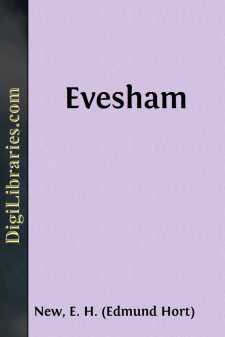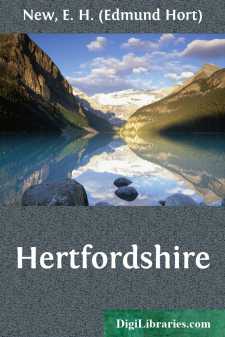Categories
- Antiques & Collectibles 13
- Architecture 36
- Art 48
- Bibles 22
- Biography & Autobiography 813
- Body, Mind & Spirit 142
- Business & Economics 28
- Children's Books 15
- Children's Fiction 12
- Computers 4
- Cooking 94
- Crafts & Hobbies 4
- Drama 346
- Education 46
- Family & Relationships 57
- Fiction 11828
- Games 19
- Gardening 17
- Health & Fitness 34
- History 1377
- House & Home 1
- Humor 147
- Juvenile Fiction 1873
- Juvenile Nonfiction 202
- Language Arts & Disciplines 88
- Law 16
- Literary Collections 686
- Literary Criticism 179
- Mathematics 13
- Medical 41
- Music 40
- Nature 179
- Non-Classifiable 1768
- Performing Arts 7
- Periodicals 1453
- Philosophy 64
- Photography 2
- Poetry 896
- Political Science 203
- Psychology 42
- Reference 154
- Religion 513
- Science 126
- Self-Help 84
- Social Science 81
- Sports & Recreation 34
- Study Aids 3
- Technology & Engineering 59
- Transportation 23
- Travel 463
- True Crime 29
Evesham
Description:
Excerpt
CHAPTER I
INTRODUCTION
Science grows and Beauty dwindles—roofs of slated hideousness!
—LOCKSLEY HALL, SIXTY YEARS AFTER
Those who love with a deep reverence the work of their forefathers, whether because of the character and beauty of their handiwork, or from the historical associations which are indissolubly connected with it, cannot but regard with pain and abhorrence any cause which tends towards the demolition or destruction of the monuments of the past. To these it is a significant and distressing fact that hardly any modern English buildings or streets possess the qualities which give the value and charm to the old cities, towns, and villages of which we are the grateful inheritors. If any reader is inclined to doubt the truth of this statement, or to consider the sentiment expressed extravagant or groundless, let him consider the difference between the old towns and the new.
Evesham provides a typical and sufficiently striking instance of the contrasted methods and results. Here there is hardly an old house which has not a local and individual character. Many of them may be plain, severely plain, some possibly ugly; but in each can be read by all who will, a distinct and separate thought, or series of thoughts, connecting the dwelling with its builders and owners, and with the soil out of which it has sprung.
As the varying undulations of the face of the country tell a plain tale to the geologist, so the shape and materials of human habitations tell their story to the student of architecture and the history of man.
The poet Wordsworth pointed out that one of the great charms of the Lake country lay in the way in which the dwellings sprang out of the hill side, as if a natural growth born of the requirements of the peasant or farmer and the materials provided by nature. Throughout England this was once the case; no two houses were precisely alike because no two people had precisely the same ideas, wishes and requirements; and the material was dictated by the stone or timber provided by the district. Every building was in old times the combined expression of the individual man and the genius loci.
The timber cottages which are still to be found in the town tell of the time when tracts of the original forest still lingered, and oak was the cheapest material fit for building. Often the foundation of the walls is of stone, and the earliest stone to be used was that which could be had for the digging, the blue lias found in thin layers embedded in the clay of which the vale is composed. In the back streets which retain, as would be expected, more of their primitive character than the more respectable thoroughfares, this blue stone has been much used, and in the churches it can be seen in the earlier parts making a very pretty wall with its thin horizontal lines. The tower of the church of All Saints shows it to great advantage.
Another stone is also employed, and one far better suited for building, because it can be obtained in blocks of almost any size, and carved with the utmost delicacy....




